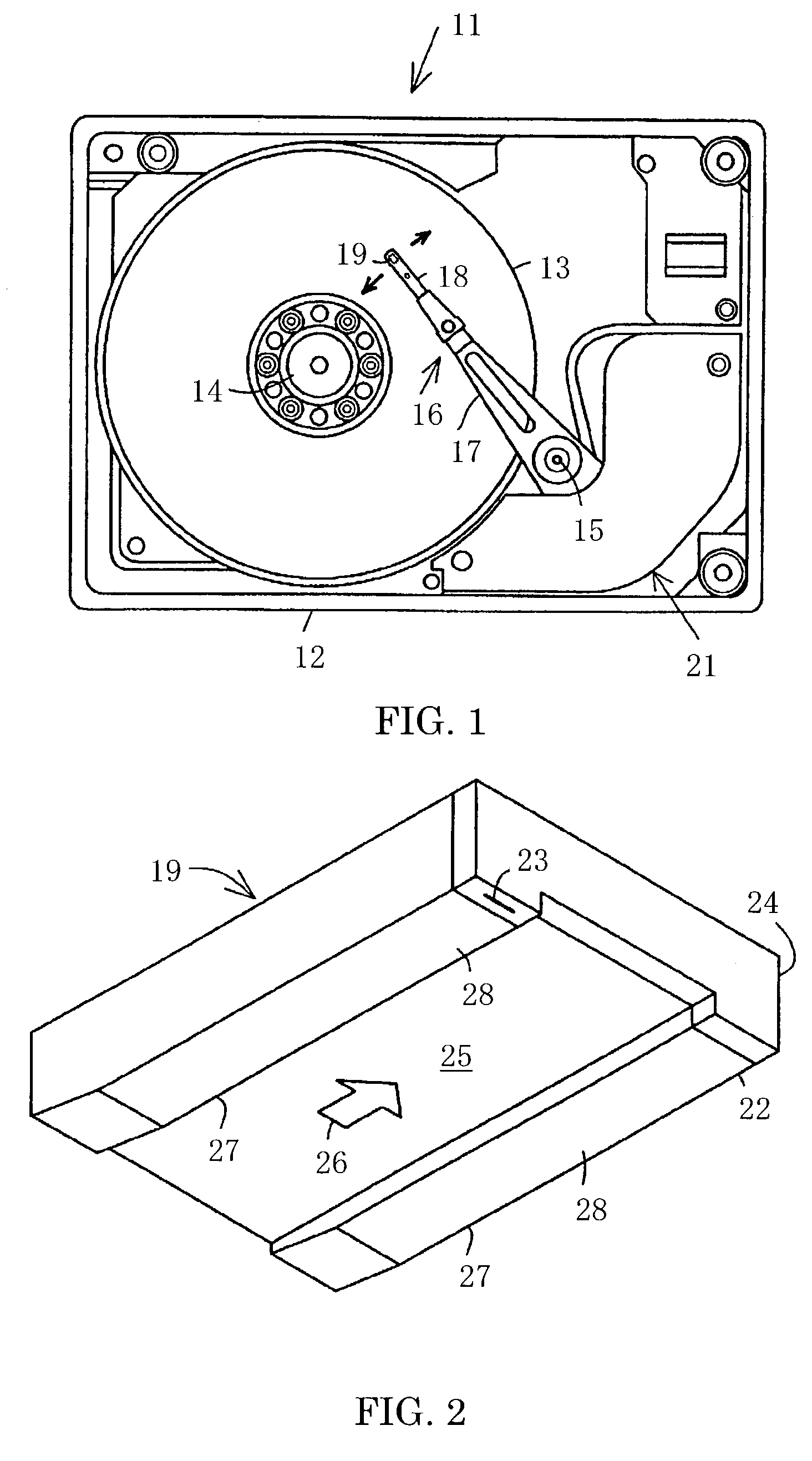Flux guide type device, head having the same, and drive
a technology of flux guide and head, applied in the field of magnetic device, can solve the problems of deteriorating resolution in the direction of track width, hindering the implementation of read head, and difficult implementation of highly sensitive tmr head, so as to reduce the attenuation of signal magnetization, reduce the attenuation of signal flux, and effectively miniaturize the device
- Summary
- Abstract
- Description
- Claims
- Application Information
AI Technical Summary
Benefits of technology
Problems solved by technology
Method used
Image
Examples
example 1
[0086]The structure shown in FIG. 6 is produced. The flux guide film 200 includes a magnetic layer 210 made of CoFe with a thickness of 30 Å, an intermediate layer 220 made of Ru with a thickness of 8 Å, and a magnetic layer 230 made of CoFe with a thickness of 20 Å. At the opposite side to the carrier with respect to the flux guide film 200, the spin-valve film 100 is formed which includes a free magnetic layer 146 made of CoFe with a thickness of 25 Å, a free intermediate layer 144 made of Ru with a thickness of 8 Å, a free magnetic layer 142 made of CoFe with a thickness of 20 Å, a spin-valve intermediate layer 130 made of Cu with a thickness of 25 Å, a pinned magnetic layer 120 made of CoFe with a thickness of 25 Å, and an antiferromagnetic layer 110 made of PdPtMn with a thickness of 150 Å.
[0087]Following a formation of each film, a thermal treatment was conducted to order the PdPtMn exchange-coupling layer, in a vacuum magnetic field at 280° C. for three hours under magnetic-f...
example 2
[0089]The structure shown in FIG. 6 is produced. The flux guide film 200A includes a magnetic layer 210A made of CoFe with a thickness of 25 Å, an intermediate layer 220A made of Ru with a thickness of 8 Å, and a magnetic layer 230A made of CoFe with a thickness of 20 Å. The TMR film 100A is formed on the flux guide film 200A which includes a free magnetic layer 146 made of CoFe with a thickness of 25 Å, a free intermediate layer 144 made of Ru with a thickness of 8 Å, a free magnetic layer 142 made of CoFe with a thickness of 25 Å, a TMR intermediate layer 150 made of Al2O3 with a thickness of 8 Å, a pinned magnetic layer 120 made of CoFe with a thickness of 25 Å, and an antiferromagnetic layer 110 made of PdPtMn with a thickness of 150 Å.
example 3
[0090]The structure shown in FIG. 7 is produced. The TMR film 100B is formed which includes a free magnetic layer 146B made of CoFe with a thickness of 23 Å, a free intermediate layer 144B made of Ru with a thickness of 8 Å, a free magnetic layer 142B made of CoFe with a thickness of 25 Å, a TMR intermediate layer 150 made of Al2O3 with a thickness of 8 Å, a pinned magnetic layer 120 made of CoFe with a thickness of 25 Å, and an antiferromagnetic layer 110 made of PdPtMn with a thickness of 150 Å. The process then applies resist onto part which will become the TMR device 100B, and removes through etching a portion from the top to the Al2O3 film, thereby projecting the free layer 140B and activating the flux guide film 200B.
[0091]FIG. 10 shows the flux guide type head manufactured in accordance with this method. The lower electrode layer 52b is formed with a thickness of 200 Å on the lower shield 52a made of NiFe with a thickness of 3 μm. The TMR device 100B is formed in accordance w...
PUM
| Property | Measurement | Unit |
|---|---|---|
| Thickness | aaaaa | aaaaa |
| Thickness | aaaaa | aaaaa |
| Nanoscale particle size | aaaaa | aaaaa |
Abstract
Description
Claims
Application Information
 Login to View More
Login to View More - R&D
- Intellectual Property
- Life Sciences
- Materials
- Tech Scout
- Unparalleled Data Quality
- Higher Quality Content
- 60% Fewer Hallucinations
Browse by: Latest US Patents, China's latest patents, Technical Efficacy Thesaurus, Application Domain, Technology Topic, Popular Technical Reports.
© 2025 PatSnap. All rights reserved.Legal|Privacy policy|Modern Slavery Act Transparency Statement|Sitemap|About US| Contact US: help@patsnap.com



